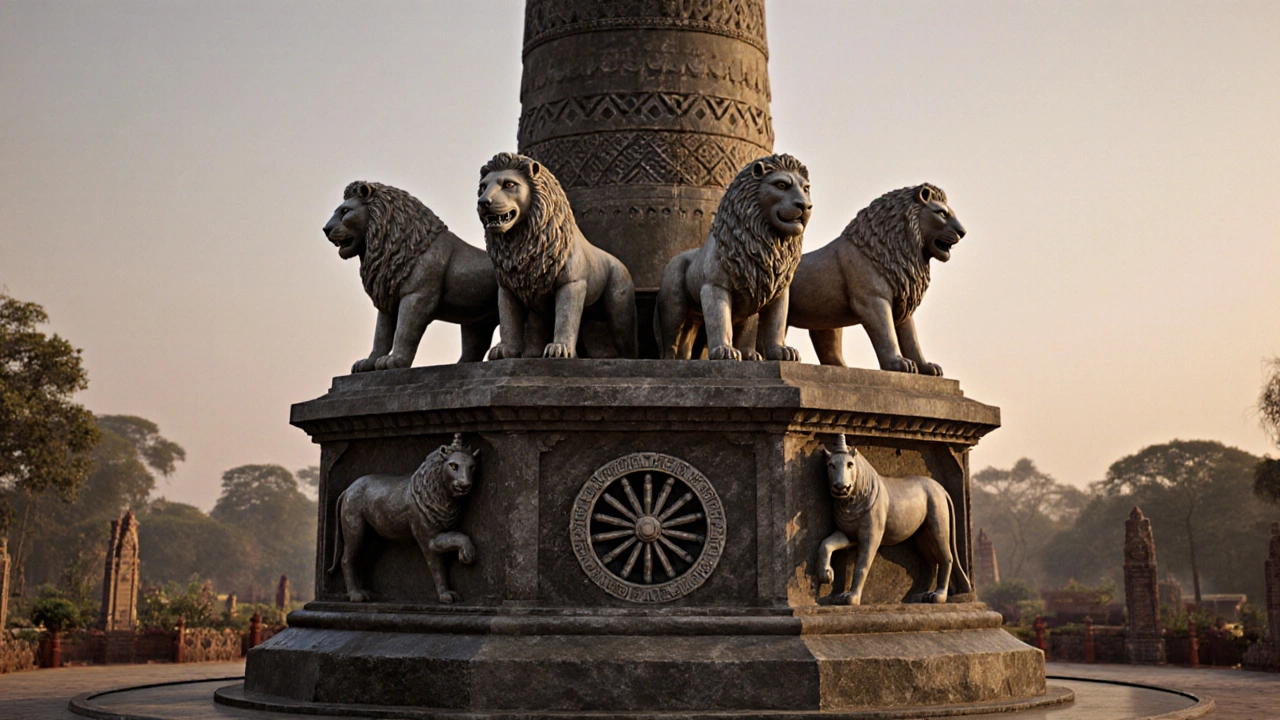National Emblem of India – Meaning, History & Symbolism
When you see the national emblem of India, a view of the Lion Capital of Ashoka flanked by the motto ‘Satyameva Jayate’. Also known as India’s state seal, it represents the country’s unity, sovereignty and cultural heritage. The emblem ties together ancient wisdom and modern democracy, a link you’ll notice in many Indian slogans and patriotic quotes.
The centerpiece of the emblem is the Lion Capital, a sculpture from 250 BC that originally stood at Sarnath. It features four lions standing back‑to‑back, symbolizing power, courage and confidence. Below the lions sit a horse and a bull, representing progress and strength, while a Dharma Chakra (wheel) completes the base, hinting at the nation’s moral compass. In 1950, the Satyameva Jayate, the Sanskrit phrase meaning ‘Truth alone triumphs’ was adopted as the national motto and placed underneath the capital. This phrase comes from the Mundaka Upanishad and instantly connects the emblem to the idea of truth governing the state.
How the Emblem Connects to Indian Slogans and Patriotic Quotes
Every time a government document or a passport stamp shows the emblem, you’re also seeing the echo of popular Indian slogans, short, catchy phrases used in campaigns, tourism and social movements. Slogans like “Incredible India” or “Make in India” ride on the same visual language of pride and belief in progress that the emblem conveys. Likewise, many patriotic quotes, lines from poets, leaders and activists that celebrate the nation reference the emblem’s elements—lions for bravery, the wheel for dharma, and truth as a guiding principle. The emblem therefore isn’t just a static image; it’s a living reference that shapes how Indians talk about their country in everyday conversation and social media.
Because the emblem appears on everything from school notebooks to official websites, it also serves as a teaching tool. Kids learn the story of Ashoka’s lions, the meaning of “Satyameva Jayate,” and the purpose behind each animal. This educational angle reinforces the values embedded in the national symbols, making them easier to remember when you read a motivational quote or a campaign slogan. In short, the emblem encompasses history, requires cultural knowledge, and influences modern expressions of pride.
Below you’ll find a curated set of articles that dig deeper into these connections. Whether you’re looking for a quick fact about the Lion Capital, the story behind the national motto, or fresh ideas for patriotic quotes to share on WhatsApp, the collection has you covered. Scroll down to explore quotes, slogans, and insights that all trace back to the national emblem of India.
Discover why the Lion Capital of Ashoka is India’s national emblem, its history, design meaning, and how it differs from the flag and other symbols.
More